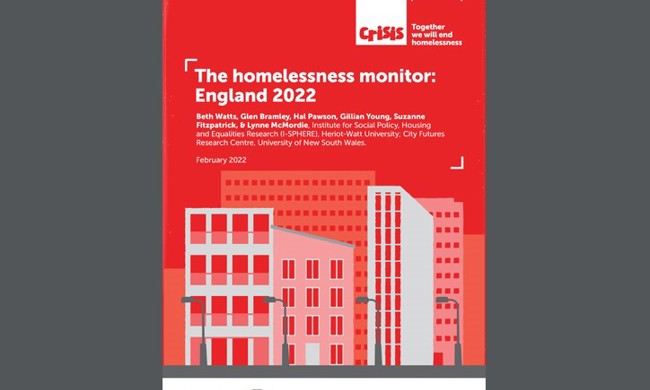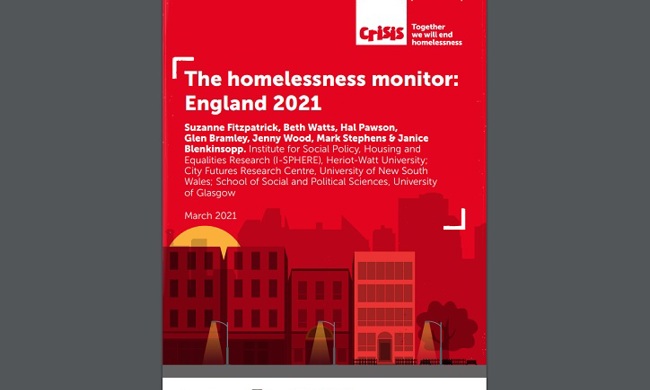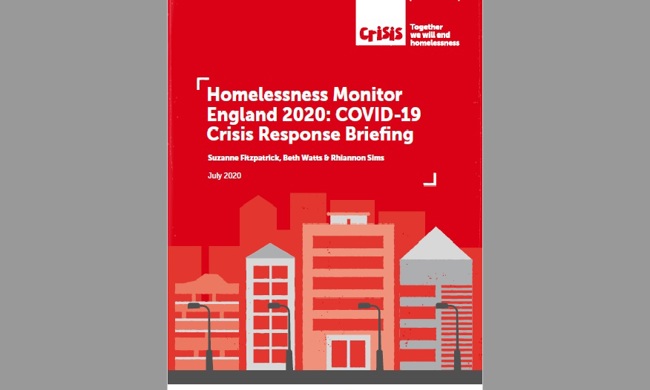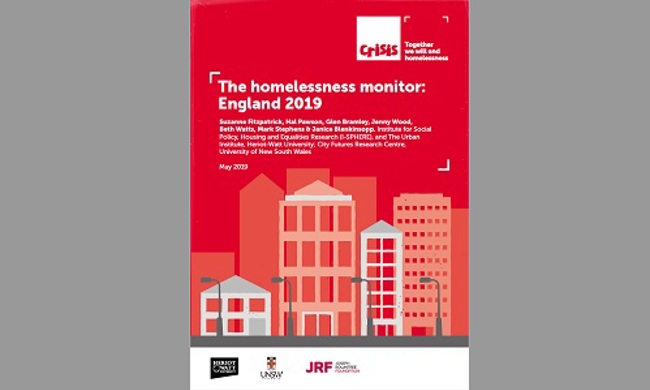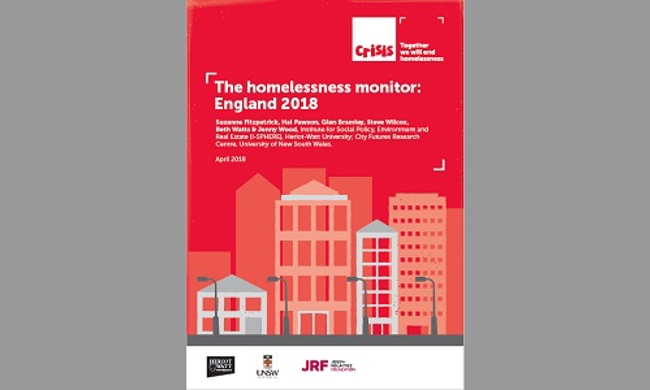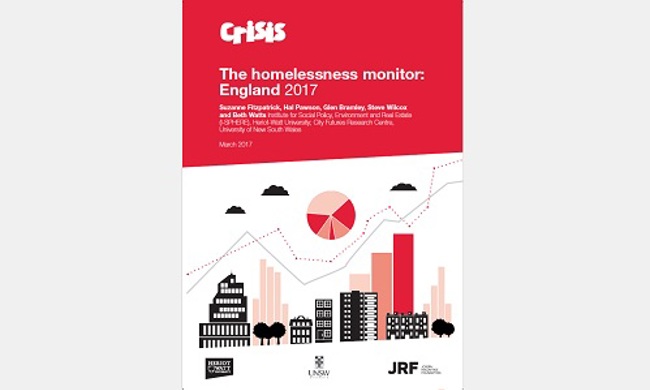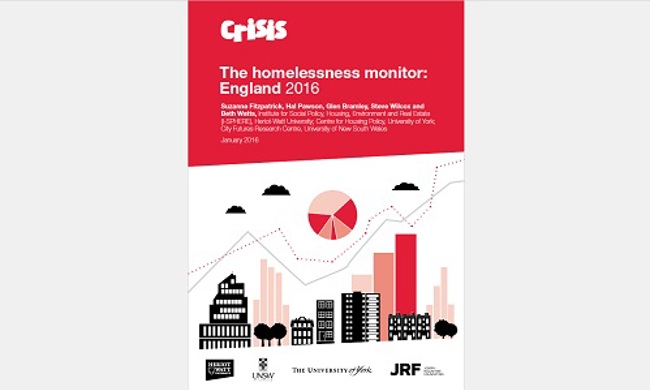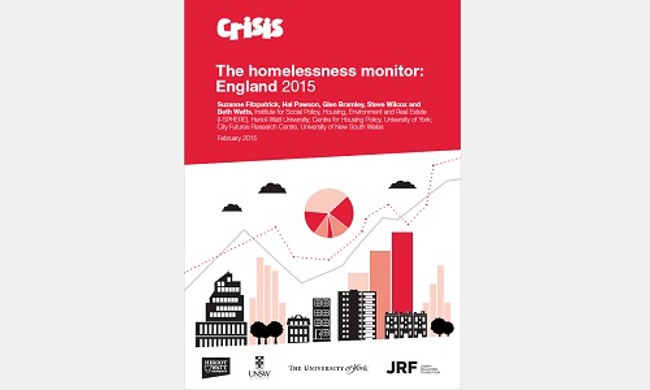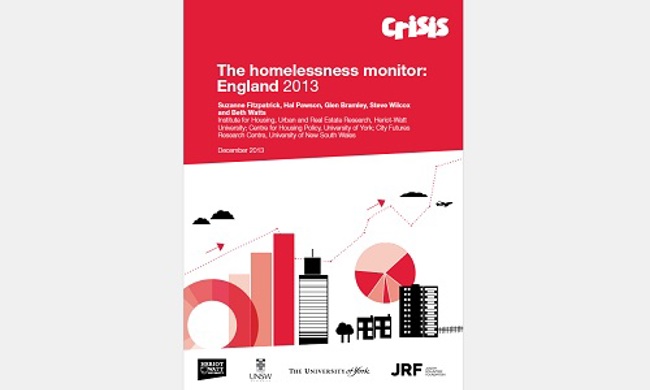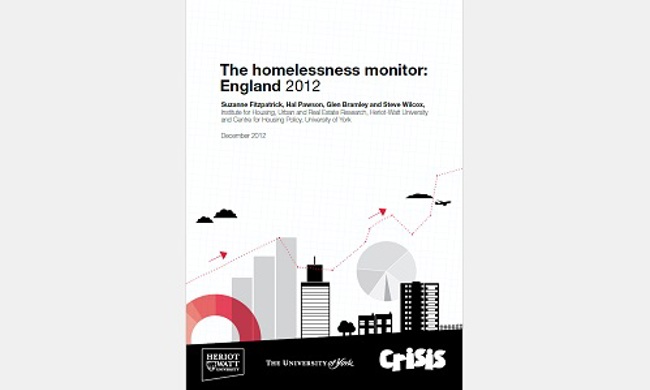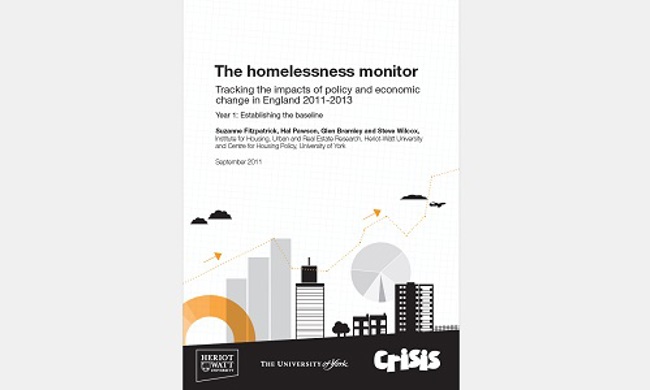The Homelessness Monitor: England 2022
22.02.2022
The Homelessness Monitor: England 2022 was commissioned by Crisis and led by Heriot-Watt University, as part of the Homelessness Monitor series, a longitudinal study providing independent analysis of the homelessness impacts of recent economic and policy developments in England. The research takes stock of homelessness in 2022 and the five year period before this. It also highlights emerging trends and forecasts some of the likely future changes, identifying the developments likely to have the most significant impacts on homelessness.
Key findings
- Some 282,000 single people, couples and families were judged as homeless or threatened with homelessness by local authorities in 2020/21, an 8% fall on 2019/20 levels. This reduction resulted wholly from a 20% drop in the numbers assessed as ‘threatened with homelessness’, with numbers assessed as actually homeless up by 7%.
- While overall statutory homelessness demand decreased slightly in the first pandemic year, total temporary accommodation placements continued to increase (up by 4% in 2020/21), and Bed and Breakfast hotel placements rose very significantly (by 37%). Some of this increase reflects actions under the Everyone In programme, although such placements are unlikely to have been comprehensively recorded through standard statutory homelessness statistics.
- ‘Core homelessness’ in England – a concept which captures the most acute forms of homelessness – is estimated to have totalled 203,400 in 2020, down 5% on 2019 levels, primarily due to the Everyone In initiative. It is predicted that the aftermath of the COVID-19 pandemic risks a substantial rise in core homelessness, with overall levels expected to sit one-third higher than 2019 levels on
current trends. - In the longer term, the largest potential contributions to reduce core homelessness would come from raising the Local Housing Allowance, rehousing quotas for core homeless households, consistent large-scale application of Housing First accompanied by appropriate rehabilitation provision and a reduction of traditional hostel accommodation, and welfare benefit measures to reduce destitution. Maximised prevention, boosted social housing supply, and a successful ‘levelling up’ of economic performance across the English regions would also help reduce core homelessness in the long run.
- The Government target of ending rough sleeping by 2024 has been supported by substantially increased investment, including via the Rough Sleeping Initiative. Progress against this target has been radically accelerated by responses to the pandemic. But there is little confidence in the Government’s ability to achieve this objective without a clear definition of what ‘ending rough sleeping’ means in practice, an agreed approach to measurement, an updated strategy, a wider focus on rough sleeping prevention and move-on, and a willingness to address the clear tensions between the target and immigration policy.
- The pandemic significantly accelerated the support offered to single homeless households, in line with one of the key aims of the Homelessness Reduction Act 2017. Resourcing and administration of the Act is a key challenge for local authorities. Stakeholders nevertheless see the Act as failing to adequately expand statutory support for homeless households: the continued lack of entitlement to accommodation for some groups and the ‘duty to refer’ (rather than cooperate) placed on wider partners are two key weaknesses.
- An estimated 7% of private tenants were in arrears in April-May 2021, 4 percentage points more than in 2019/20. While protections introduced during the pandemic prevented widespread evictions from rental housing, numbers have been increasing significantly since the end of the eviction ban at the close of May 2021. There are mounting concerns that evictions could rise sharply in 2022, depending on landlord behaviour and court capacity.
- The Affordable Homes Programme remains heavily focused on delivery of ‘affordable rented’ homes generally seen to be unaffordable for many low-income households. Just 11% of all new affordable homes provided with government support in 2020/21 were for (lower cost) social rent, down from 65% in 2011/12. This has been accompanied by a long-term decline in new social lettings, with the 2019/20 total (149,000) 47,000 (24%) fewer than in 2011/12. While the share of all lettings to new social tenants (excluding supported housing or hostel) allocated to statutory homeless households increased in the nine years to 2019/20 (from 20% to 26%), the actual numbers of tenancies allocated to this group remained broadly static, averaging 39,000 per annum.
Reference
Watts, B., Bramley, G., Pawson, H., Young, G., Fitzpatrick, S., McMordie, L., (2022) The Homelessness Monitor: England 2022. London: Crisis.

